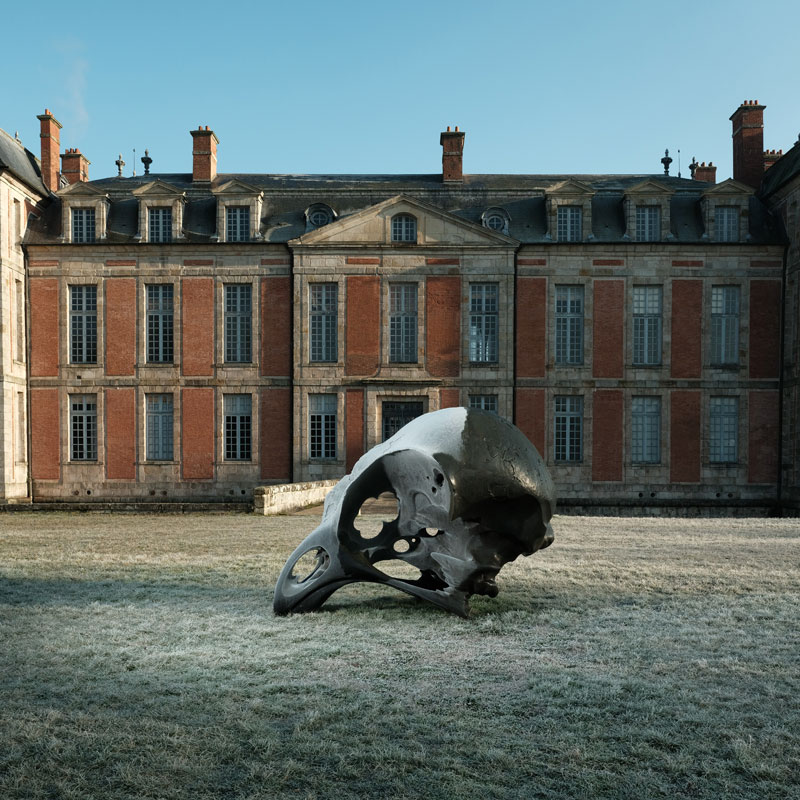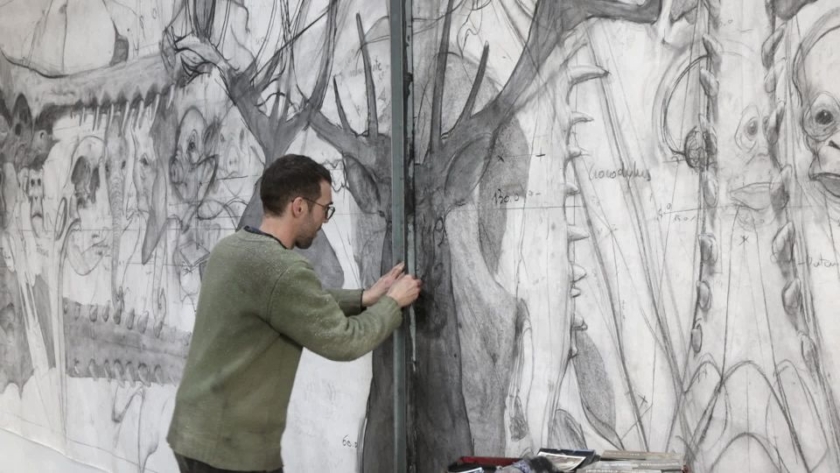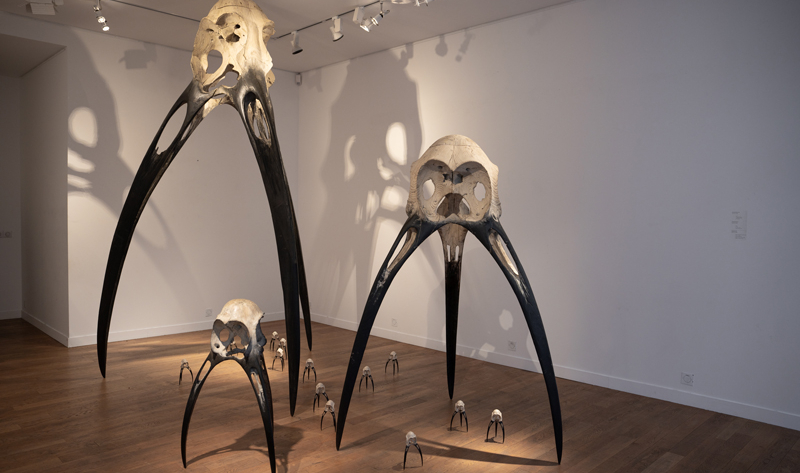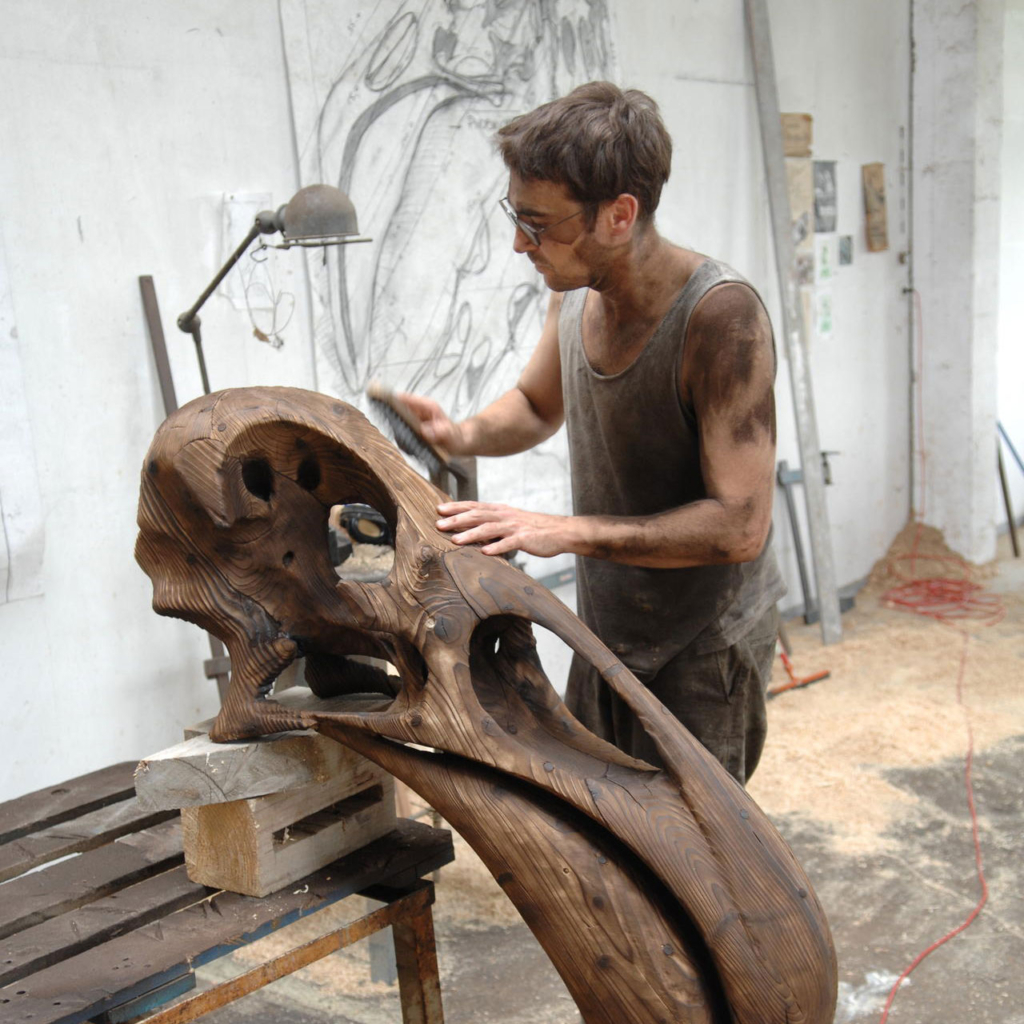
Over the past few years, I have developed a sculptural practice that implements various wood assemblies around the theme of the trophy; a prideful custom of man that I try to divert into the benefit of food animals by denouncing the ridiculous nature of this practice.
Quentin Garel
Son of the sculptor Philippe Garel, Quentin Garel was born in Paris in 1975. Graduated from the National School of Fine Arts in Paris in 1998, he was resident at Casa Velasquez from 1998 to 2000.
His work of sculpture, in bronze, iron, wood or porcelain, is characterized by the creation of a bestiary, sometimes very realistic, sometimes reduced to the state of a skeleton. Garel explains: “Over the past few years, I have developed a sculptural practice that implements various wood assemblies around the theme of the trophy; a prideful custom of man that I try to divert into the benefit of food animals by denouncing the ridiculous nature of this practice. I extended this theme through cast iron, which gives it a more monumental dimension and opens it outwards. Such a piece can, for example, use the garden as a base, giving the feeling that it partially crosses the surface of the earth, like the vestige of an emerging past”.
An excellent draughtsman, Garel works on the subjects of his sculptures beforehand on paper and completes each of his sculpture exhibitions with a series of sketches and preparatory studies.
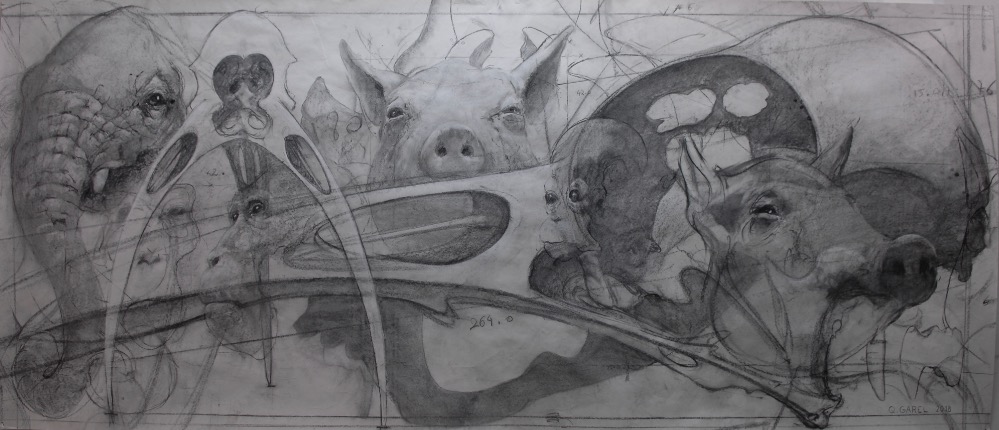

Son of the sculptor Philippe Garel, Quentin Garel was born in Paris in 1975. Graduated from the National School of Fine Arts in Paris in 1998, he was resident at Casa Velasquez from 1998 to 2000.
His work of sculpture, in bronze, iron, wood or porcelain, is characterized by the creation of a bestiary, sometimes very realistic, sometimes reduced to the state of a skeleton. Garel explains: “Over the past few years, I have developed a sculptural practice that implements various wood assemblies around the theme of the trophy; a prideful custom of man that I try to divert into the benefit of food animals by denouncing the ridiculous nature of this practice. I extended this theme through cast iron, which gives it a more monumental dimension and opens it outwards. Such a piece can, for example, use the garden as a base, giving the feeling that it partially crosses the surface of the earth, like the vestige of an emerging past”.
An excellent draughtsman, Garel works on the subjects of his sculptures beforehand on paper and completes each of his sculpture exhibitions with a series of sketches and preparatory studies.
Son of the sculptor Philippe Garel, Quentin Garel was born in Paris in 1975. Graduated from the National School of Fine Arts in Paris in 1998, he was resident at Casa Velasquez from 1998 to 2000.
His work of sculpture, in bronze, iron, wood or porcelain, is characterized by the creation of a bestiary, sometimes very realistic, sometimes reduced to the state of a skeleton. Garel explains: “Over the past few years, I have developed a sculptural practice that implements various wood assemblies around the theme of the trophy; a prideful custom of man that I try to divert into the benefit of food animals by denouncing the ridiculous nature of this practice. I extended this theme through cast iron, which gives it a more monumental dimension and opens it outwards. Such a piece can, for example, use the garden as a base, giving the feeling that it partially crosses the surface of the earth, like the vestige of an emerging past”.
An excellent draughtsman, Garel works on the subjects of his sculptures beforehand on paper and completes each of his sculpture exhibitions with a series of sketches and preparatory studies.
